Ditapis dengan

safety for all module 1:health & safety fundamentals PT. pelabuhan indonesia …
- Edisi
- -
- ISBN/ISSN
- -
- Deskripsi Fisik
- 25 halaman
- Judul Seri
- -
- No. Panggil
- IPC REP 2018 HEA h C.1
- Edisi
- -
- ISBN/ISSN
- -
- Deskripsi Fisik
- 25 halaman
- Judul Seri
- -
- No. Panggil
- IPC REP 2018 HEA h C.1
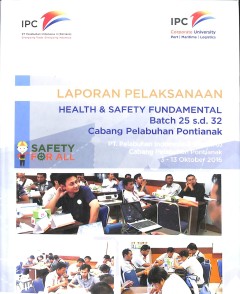
laporan pelaksanaan health&safety fundamental batch 25 s.d 32 cabang pelabuha…
- Edisi
- -
- ISBN/ISSN
- -
- Deskripsi Fisik
- 55 halaman
- Judul Seri
- -
- No. Panggil
- IPC REP 2016 HEA h C.1
- Edisi
- -
- ISBN/ISSN
- -
- Deskripsi Fisik
- 55 halaman
- Judul Seri
- -
- No. Panggil
- IPC REP 2016 HEA h C.1
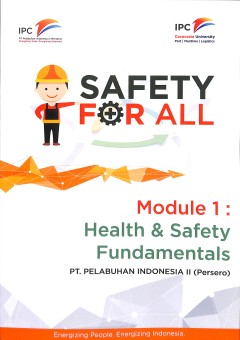
Safety for All Module 1 : Health & Safety Fundamentals : PT Pelabuhan Indones…
- Edisi
- -
- ISBN/ISSN
- -
- Deskripsi Fisik
- 30 cm
- Judul Seri
- -
- No. Panggil
- IPC GUI SAF s
- Edisi
- -
- ISBN/ISSN
- -
- Deskripsi Fisik
- 30 cm
- Judul Seri
- -
- No. Panggil
- IPC GUI SAF s
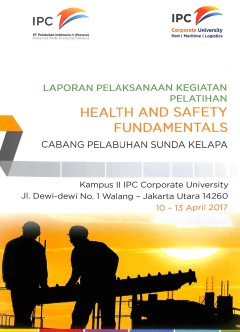
Laporan pelakasanaan kegiatan pelatihan health and safety fundamentals Cabang…
- Edisi
- -
- ISBN/ISSN
- -
- Deskripsi Fisik
- iv, 24 p.; 30 cm
- Judul Seri
- -
- No. Panggil
- IPC REP 2017 HEA h
- Edisi
- -
- ISBN/ISSN
- -
- Deskripsi Fisik
- iv, 24 p.; 30 cm
- Judul Seri
- -
- No. Panggil
- IPC REP 2017 HEA h
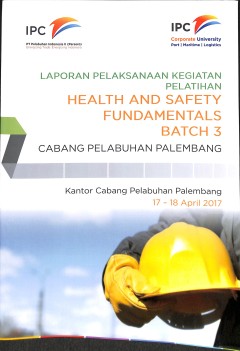
Laporan pelaksaan kegiatan pelatihan health and safety fundamentals Bacth 3 C…
- Edisi
- -
- ISBN/ISSN
- -
- Deskripsi Fisik
- i, 23 p.; 30 Cm
- Judul Seri
- -
- No. Panggil
- IPC REP 2017 HEA h
- Edisi
- -
- ISBN/ISSN
- -
- Deskripsi Fisik
- i, 23 p.; 30 Cm
- Judul Seri
- -
- No. Panggil
- IPC REP 2017 HEA h

A study on educations role in establishing strategies for improving safety at…
Safety at sea is a major concern of the maritime industry and it is through education and training that continued improvement can be realized. Despite increased awareness there has often only been minimal improvement made to training programs. The steady stream of accidents and disasters at sea are testament to this situation. This paper has been written to encourage a review of present maritim…
- Edisi
- Volume 27 Number 3
- ISBN/ISSN
- -
- Deskripsi Fisik
- 18 pages
- Judul Seri
- The Asian Journal of Shipping and Logistics
- No. Panggil
- ATC MR DAV s
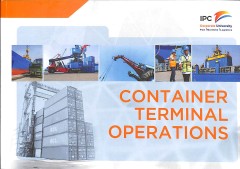
Container Terminal Operations
This book describe the activities, facilities and operation of the container terminal. Beside Explain the role of the container terminal in cargo handling and Discuss organizational structure, management, supervision and control of the container terminal.
- Edisi
- -
- ISBN/ISSN
- -
- Deskripsi Fisik
- 114 p., : illus : 15 cm
- Judul Seri
- -
- No. Panggil
- IPC GUI IND c
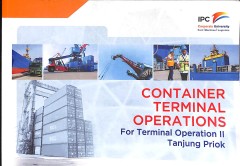
Container Terminal Operations : For Terminal Operation II Tanjung Priok
This book describe the activities, facilities and operation of the container terminal. Besides discuss organizational structure, management, supervision and control of container terminal Explain the role of the container terminal in cargo handling and safety working environment.
- Edisi
- -
- ISBN/ISSN
- -
- Deskripsi Fisik
- 114 p., : illus : 15 cm
- Judul Seri
- -
- No. Panggil
- IPC GUI IND c

Workplace safety in the supply chain- a review of the literature and call for…
The purpose of this paper is to review the literature and call for additional research into the human, operational, and regulatory issues that contribute to workplace safety in the supply chain.
- Edisi
- Vol. 19 No. 1, 2008 pp. 65-83
- ISBN/ISSN
- 0957-4093
- Deskripsi Fisik
- 21 p .
- Judul Seri
- The International Journal of Logistics Management
- No. Panggil
- ATC LO CAN w C.1

Motor Fleet Safety And Security Management
To achieve optimum safety, everyone involved in the transportation system should be adequately trained, supervised, and monitored. Proper data and incident reports must be maintained to identify trends and problem areas. Keeping the trademark style that made the previous edition so popular, the author addresses the critical steps for successful driver selection, training, instruction, and super…
- Edisi
- Second Ed.
- ISBN/ISSN
- 978-1-4398-9507-8
- Deskripsi Fisik
- xxi, 163 p., 23 cm
- Judul Seri
- -
- No. Panggil
- TXT LO DEL m

2011 ESP Code : International code on the enhanced programme of inspections d…
- Edisi
- 2013 Ed.
- ISBN/ISSN
- 978-92-801-1552-9
- Deskripsi Fisik
- vii, 294 p., 33 cm
- Judul Seri
- -
- No. Panggil
- REF MR IMO t
- Edisi
- 2013 Ed.
- ISBN/ISSN
- 978-92-801-1552-9
- Deskripsi Fisik
- vii, 294 p., 33 cm
- Judul Seri
- -
- No. Panggil
- REF MR IMO t
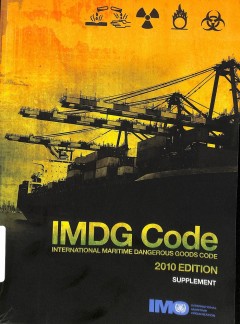
IMDG Code : International maritime dangerous goods code
The International Maritime Dangerous Goods Code lays out the regulatory framework for all aspects of handling dangerous goods and marine pollutants in sea transport, but does not include all details of procedures for packing of dangerous goods or actions to take in the event of an emergency or accident involving personnel associated with the IMDG Code that cover these aspects of the transport o…
- Edisi
- 2010 Editions
- ISBN/ISSN
- 978-92-801-1514-7
- Deskripsi Fisik
- v, 441 hlm., 33 cm
- Judul Seri
- -
- No. Panggil
- REF MR IMO i

Chemicals in Ships
The aim of this book is to provide for marine engineers, in seagoing and maintenance appointments, on chemicals and chemical problems commonly met with in ships. The application of correct knowledge on these subjects cannot be over-emphasized since chemicals play a vital part in modern ship practice, and their mishandling or misuse can lead, at the very least, to lowered efficiency of operation…
- Edisi
- -
- ISBN/ISSN
- 0 900976 72 1
- Deskripsi Fisik
- xiii, 259 p., : illus : index : 22 cm
- Judul Seri
- -
- No. Panggil
- PO KEN c
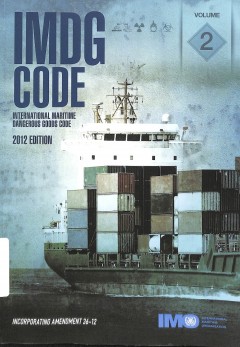
IMDG Code : International maritime dangerous goods code Volume 2
- Edisi
- 2012 Ed. Vol. 2
- ISBN/ISSN
- 978-92-801-1561-1
- Deskripsi Fisik
- v, 369 p., 28 cm
- Judul Seri
- -
- No. Panggil
- REF MR IMO i
- Edisi
- 2012 Ed. Vol. 2
- ISBN/ISSN
- 978-92-801-1561-1
- Deskripsi Fisik
- v, 369 p., 28 cm
- Judul Seri
- -
- No. Panggil
- REF MR IMO i
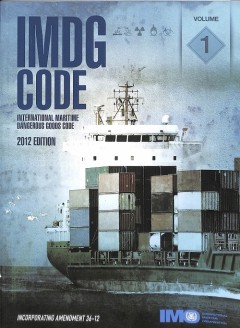
IMDG Code : International maritime dangerous goods code Volume 1
- Edisi
- 2012 Ed. Vol. 1
- ISBN/ISSN
- 978-92-801-15611
- Deskripsi Fisik
- xiv, 481 p., 33 cm
- Judul Seri
- -
- No. Panggil
- REF MR IMO i
- Edisi
- 2012 Ed. Vol. 1
- ISBN/ISSN
- 978-92-801-15611
- Deskripsi Fisik
- xiv, 481 p., 33 cm
- Judul Seri
- -
- No. Panggil
- REF MR IMO i
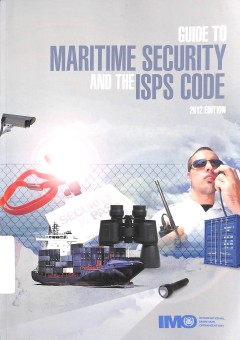
Guide to maritime security and the ISPS code
This guide is intended to provide consolidated guidance on the implementation of the security related amendments to the International Convention on the Safety of Life at Sea, 1974 (SOLAS Convention) which were adopted in December 2002. These amendments included a new chapter XI-2 in the SOLAS Convention, "Special measures to enhance maritime security", which enshrined the International Ship and…
- Edisi
- 2012 Ed.
- ISBN/ISSN
- 978-92-801-1544-4
- Deskripsi Fisik
- xv, 369 p., 33 cm
- Judul Seri
- -
- No. Panggil
- REF MR IMO g
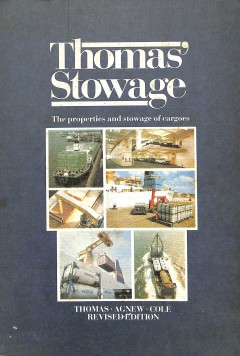
The Properties and Stowage of Cargoes
Cargo handling itself in the main has changed from a labour intensive operation to a capital intensive one. This new edition of Thomas Stowage, a book which has well stood up to the test of time, has been revised yet again with the paramount object of keeping its users abreast pf present stowage disciplines. Figures have been metricated and a large number of new commodities have been incorporated.
- Edisi
- -
- ISBN/ISSN
- 0 85174 450 8
- Deskripsi Fisik
- 370 p., : illus : index : 32 cm
- Judul Seri
- -
- No. Panggil
- TXT PO STO t C.1

Proficiency in survival craft and rescue boats other than fast rescue boats
The purpose of the IMO model courses is to assist maritime training institutes and their teaching staff in organzing and introducing new training courses, or in enching, updating or supplementing existing training material where the quality and effectiveness of the training course may thereby be improved
- Edisi
- 2000 Ed.
- ISBN/ISSN
- 978-92-801-6115-1
- Deskripsi Fisik
- v, 68 p., 33 cm
- Judul Seri
- -
- No. Panggil
- TXT PO IMO p
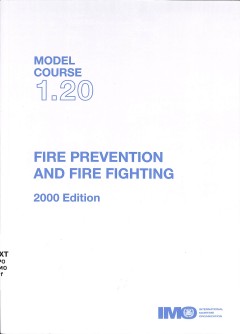
Fire prevention and fire fighting
the purpose of the IMO model courses is to asssistmaritime training instituds and their teaching staff in orgaizing and introducting new training courses, or in enhancing, updating or supplementing exiting training material where the quality and effectiveness of the training courses may thereby be improved
- Edisi
- 2000 Ed.
- ISBN/ISSN
- 978-92-801-5081-0
- Deskripsi Fisik
- v, 56 p., 33 cm
- Judul Seri
- Model Course 1.20
- No. Panggil
- TXT PO IMO f
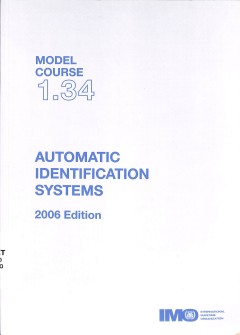
Automatic identification systems : model course 1.34
- Edisi
- 2006 Ed.
- ISBN/ISSN
- 978-92-801-4227-3
- Deskripsi Fisik
- v, 102 p., 33 cm
- Judul Seri
- -
- No. Panggil
- TXT PO IMO a
- Edisi
- 2006 Ed.
- ISBN/ISSN
- 978-92-801-4227-3
- Deskripsi Fisik
- v, 102 p., 33 cm
- Judul Seri
- -
- No. Panggil
- TXT PO IMO a
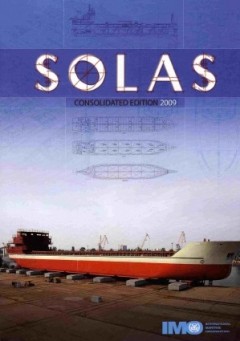
Solas : consolidated edition 2009
Of all the international conventions dealing with maritime safety, the most important is the International Convention for the Safety of Life at Sea, better known as SOLAS, which covers a wide range of measures designed to improve the safety of shipping. The Convention is also one of the oldest of its kind: the first version was adopted in 1914 following the sinking of the Titanic with the loss …
- Edisi
- Fifth Edition
- ISBN/ISSN
- 978-92-801-1505-5
- Deskripsi Fisik
- viii, 418 hlm., 33 cm
- Judul Seri
- -
- No. Panggil
- TXT MR IMO s
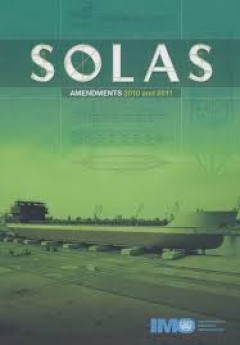
Solas : Amendments 2010 and 2011
This publication presents amandments to the SOLAS Convention and the 1988 Protocol concerning, in part: 1. Goal-based ship contruction standars for bulk carriers and oil tankers 2. Corrosion protection of cargo oil tanks of crude oil carriers 3. Gas measurement and detection in double-hull and double-bottom spaces 4. The 2010 FTP Code 5. Life-saving appliances and arrangements 6. The auto…
- Edisi
- -
- ISBN/ISSN
- 978-92-801-1542-0
- Deskripsi Fisik
- vii, 35 p., 21 cm
- Judul Seri
- -
- No. Panggil
- TXT MR IMO s
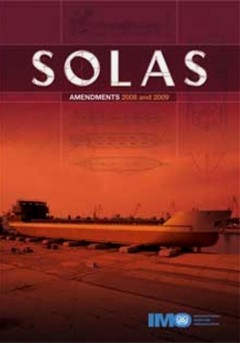
Solas : Amendments 2008 and 2009
- Edisi
- -
- ISBN/ISSN
- 978-92-801-1520-8
- Deskripsi Fisik
- viii, 78 p., 21 cm
- Judul Seri
- -
- No. Panggil
- TXT MR IMO s
- Edisi
- -
- ISBN/ISSN
- 978-92-801-1520-8
- Deskripsi Fisik
- viii, 78 p., 21 cm
- Judul Seri
- -
- No. Panggil
- TXT MR IMO s

General operator's certificate for the global maritime distress and safety sy…
- Edisi
- 2004 Ed.
- ISBN/ISSN
- 978-92-801-4181-8
- Deskripsi Fisik
- v. 368 p., 33 cm
- Judul Seri
- Model Course 1.25
- No. Panggil
- MR IMO g
- Edisi
- 2004 Ed.
- ISBN/ISSN
- 978-92-801-4181-8
- Deskripsi Fisik
- v. 368 p., 33 cm
- Judul Seri
- Model Course 1.25
- No. Panggil
- MR IMO g

The Impact of Seafarers’ Perceptions of National Culture and Leadership on …
This research aims to examine the effects of national culture and leadership style on safety performance in bulk shipping companies. Survey data collected from 322 respondents working in dry bulk carriers was used, a multiple regression analysis was conducted to analyze the influence of national culture and leadership styles (i.e. transformational, passive management, and contingent reward) on …
- Edisi
- 4 (2016) 075 – 087
- ISBN/ISSN
- -
- Deskripsi Fisik
- 13 p.
- Judul Seri
- ScienceDirect
- No. Panggil
- ATC LO SHA t

An analysis of ship escort and convoy operations in ice conditions
Winter navigation is a complex but common operation in the Northern Baltic Sea areas. In Finnish waters, the safety of the wintertime maritime transportation system is managed through the Finnish–Swedish winter navigation system. This system results in different operational modes of ship navigation, with vessels either navigating independently or under icebreaker assistance. A recent risk ana…
- Edisi
- 2016
- ISBN/ISSN
- 0925-7535
- Deskripsi Fisik
- 12p
- Judul Seri
- Safety Science
- No. Panggil
- ATC LO GOE a

An advanced risk analysis approach for container port safety evaluation
Risk analysis in seaports plays an increasingly important role in ensuring port operation reliability, maritime transportation safety and supply chain distribution resilience. However, the task is not straightforward given the challenges, including that port safety is affected by multiple factors related to design, installation, operation and maintenance and that traditional risk assessment met…
- Edisi
- Vol. 41, No. 7, 634–650
- ISBN/ISSN
- -
- Deskripsi Fisik
- 19p
- Judul Seri
- Maritime Policy & Management: The flagship journal of international shipping and port research
- No. Panggil
- ATC LO ALY a

Real-Time Stacking System for dangerous containers in seaport terminals
In container terminals, many operations occur within the storage area including import, exportAbstract: In container terminals, many operations occur within the storage area including import, export Abstract: In container terminals, many operations occur within the storage area including import, expor and shifting containers. These operations must respect a set of rules and constraints in order…
- Edisi
- -
- ISBN/ISSN
- 2405-8963
- Deskripsi Fisik
- 8 p.
- Judul Seri
- Science Direct
- No. Panggil
- ATC PO KIK r
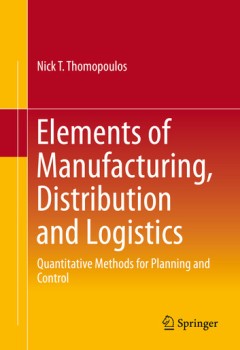
Elements of danufacturing, distribution and logistics: quantitative methods f…
- Edisi
- -
- ISBN/ISSN
- 978-3-319-26862-0
- Deskripsi Fisik
- -
- Judul Seri
- -
- No. Panggil
- TXT LO THO e
- Edisi
- -
- ISBN/ISSN
- 978-3-319-26862-0
- Deskripsi Fisik
- -
- Judul Seri
- -
- No. Panggil
- TXT LO THO e
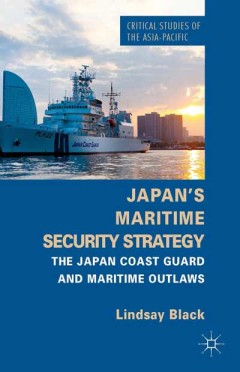
Japan’s maritime security strategy: The japan coast guard and maritime out…
- Edisi
- -
- ISBN/ISSN
- 978-1-349-48130-9
- Deskripsi Fisik
- xii, 219 p.
- Judul Seri
- -
- No. Panggil
- TXT MR BLA j
- Edisi
- -
- ISBN/ISSN
- 978-1-349-48130-9
- Deskripsi Fisik
- xii, 219 p.
- Judul Seri
- -
- No. Panggil
- TXT MR BLA j

Fire safety at sea
- Edisi
- -
- ISBN/ISSN
- 1-902536-42-8
- Deskripsi Fisik
- -
- Judul Seri
- -
- No. Panggil
- TXT MR Cow f
- Edisi
- -
- ISBN/ISSN
- 1-902536-42-8
- Deskripsi Fisik
- -
- Judul Seri
- -
- No. Panggil
- TXT MR Cow f

Maritime safety culture in Europe
Three years after the shipwreck of the Erika, the Prestige disaster cannot help launching a public indignation: the majority of people wonder whether co-ordinated actions exist to prevent such a serious accident. The last two disasters (Erika in 1999 and Prestige in December 2002), reminded the European Union that European Maritime Safety was neglected. For three years it can be observed that a…
- Edisi
- Volume 46 Number 1 2004
- ISBN/ISSN
- -
- Deskripsi Fisik
- 61 p.
- Judul Seri
- -
- No. Panggil
- ATC MR THE m

Requirements for e-Navigation architectur
Technology is changing the way of navigation. New technologies for communication and navigation can be found on virtually every vessel. System architectures define structure and cooperation of components and subsystems. IMO, IALA, costal authorities, technology provider and many more actually propose new architectures for e-Navigation. This paper looks at other transportation domains and techni…
- Edisi
- -
- ISBN/ISSN
- -
- Deskripsi Fisik
- 20 p.
- Judul Seri
- -
- No. Panggil
- ATC MR FRO r
safety and shipping review 2013
In 2012, two high profile maritime incidents pushed shipping safety into the public eye once more with the loss of the Costa Concordia off Italy in January followed in February by that of the Rabaul Queen ferry, off Papua New Guinea. Both events caused a tragic loss of life. However, while these incidents have dominated public ship safety discussions, statistics reveal that reported total losse…
- Edisi
- -
- ISBN/ISSN
- -
- Deskripsi Fisik
- 13 pages
- Judul Seri
- An annual review of trends and developments in shipping losses and safety – January 2013
- No. Panggil
- TXT LO ALI s

Advanced uncertainty modelling for container port risk analysis
Globalization has led to a rapid increase of container movements in seaports. Risks in seaports need tobe appropriately addressed to ensure economic wealth, operational efficiency, and personnel safety. Asa result, the safety performance of a Container Terminal Operational System (CTOS) plays a growing rolein improving the efficiency of international trade. This paper proposes a novel method to…
- Edisi
- -
- ISBN/ISSN
- -
- Deskripsi Fisik
- 9 p.
- Judul Seri
- Accident Analysis and Prevention
- No. Panggil
- ATC PO ALY a

Managing Safety Risks In Helicopter Maritime Operations
Nowadays, helicopters have been used in maritime transportation to serve offshore platforms. This paper outlines methodology for assessing safety risks by operating in the vicinity of helidecks. During each flight, decisions must be made regarding the events that involve interactions between the four safety risk elements – the pilot in command, the aircraft, the environment and the operat…
- Edisi
- Vol. 16, No. 5
- ISBN/ISSN
- 1466-4461
- Deskripsi Fisik
- 13 p
- Judul Seri
- Journal of Risk Research
- No. Panggil
- ATC MR OLJ m
Safety training : that transfers 50+High-energy activities to engage your lea…
The best learning transfer happens when participants have fun! Stop wasting time, money, energy, and resources on lecture-based safety trainings that have been proven ineffective. Set participants up for success with action-based safety training activities that will prevent injuries and incidents. Safety Training That Transfers offers more than 50 activities dedicated to different aspec…
- Edisi
- -
- ISBN/ISSN
- 978-156-286-929-8
- Deskripsi Fisik
- viii, 144 p.; 24 cm
- Judul Seri
- -
- No. Panggil
- TXT MG COH s
Shipboard cargo handling safety guide
This new publication of “Shipboard Cargo Handling Safety Guide” isbased on the safety guide of the same title issued by this department in 1982, and revised with updated safety and health basic knowledge by the Transport & Physical Distribution Industry Safety & Health Committee of the Occupational Safety & Health Council to finalize the edition. The Occupational Safety & Health Council pub…
- Edisi
- -
- ISBN/ISSN
- -
- Deskripsi Fisik
- 55 pages
- Judul Seri
- -
- No. Panggil
- TXT LO MAR s
The Ultimate Guide to Personal Safety On board Ships
While writing this e-book, we have considered that safe practices are not only for engine or deck crew but also for each and every person who boards the ship or sails with the same. It doesn’t matter if you belong to deck, engine, or galley department, when safety of the crew and the ship is at stake, a well planned team effort is what helps to overcome or fight an emergency situation. For a…
- Edisi
- First Edition
- ISBN/ISSN
- -
- Deskripsi Fisik
- 91 pages
- Judul Seri
- -
- No. Panggil
- TXT LO WAN t
Commercial and maritime statues
Commercial litigators and other users of commercial, insurance and maritime statutes will be acquainted with the occasional irritation caused by not having a relevant statute at hand. The intention of this compilation is to provide a ready reference to all the statutes regularly encountered in the context of commercial, maritime and insurance litigation. The statutes chosen are those which we c…
- Edisi
- -
- ISBN/ISSN
- 978-1-85978-5041
- Deskripsi Fisik
- xii, 420 p
- Judul Seri
- -
- No. Panggil
- TXT MR EGG c
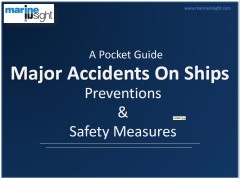
Major Accidents On Ships : Preventions & Safety Measure
- Edisi
- -
- ISBN/ISSN
- -
- Deskripsi Fisik
- 59 p
- Judul Seri
- -
- No. Panggil
- TXT PO KAN m
- Edisi
- -
- ISBN/ISSN
- -
- Deskripsi Fisik
- 59 p
- Judul Seri
- -
- No. Panggil
- TXT PO KAN m

Safety management documentation models for the maritime labour Convention
The Maritime Labour Convention, 2006 (MLC, 2006), which will enter into force in 2012 or 2013, focuses on seafarers’ rights, safety and health in order to promote a better shipping environment. A Declaration of Maritime Labour Compliance Part II (DMLC II) is required to state the measures taken to ensure the quality of seafarers’ living and working conditions on-board a ship. It is a challe…
- Edisi
- Volume 28 Number 1 April 2012
- ISBN/ISSN
- -
- Deskripsi Fisik
- 26 p.
- Judul Seri
- -
- No. Panggil
- ATC MG JEN s

The utilisation of pisang Island as a platform to support the current safety …
Current marine navigational practice relies less on long-range visual marine signals such as lighthouses for reference purposes. This is due to the availability of Global Navigation Satellite Systems (GNSS), which are integrated with other navigational aids on ships. Therefore, the objective of this study is to review the function of Pisang Island lighthouse and to propose the most relevant use…
- Edisi
- -
- ISBN/ISSN
- -
- Deskripsi Fisik
- 8 p.
- Judul Seri
- -
- No. Panggil
- ATC MR FAD t

Measuring safety culture on ships using safety climate: a study among Indian …
Workplace safety continues to be an area of concern in the maritime industry due to the international nature of the operations. The effectiveness of extensive legislation to manage shipboard safety remains in doubt. The focus must therefore shift towards the human element - seafarers and their perceptions of safety. The study aims to understand the alignment that exists between safety culture a…
- Edisi
- -
- ISBN/ISSN
- -
- Deskripsi Fisik
- 20 p.
- Judul Seri
- -
- No. Panggil
- ATC MR BHA m

Safety at sea and air transport under EU law
- Edisi
- Vol. 42 Iss 3 pp. 1 - 19
- ISBN/ISSN
- -
- Deskripsi Fisik
- 18 p.
- Judul Seri
- -
- No. Panggil
- ATC MR ZEK s
- Edisi
- Vol. 42 Iss 3 pp. 1 - 19
- ISBN/ISSN
- -
- Deskripsi Fisik
- 18 p.
- Judul Seri
- -
- No. Panggil
- ATC MR ZEK s

Analysis of The Current Logistics and Transport Challenges in The Context Of …
The rapidly changing world determines changes in the business processes. Logistics and transport are the areas facing constant changes. Therefore, an important point is to analyse the current problems of logistics and transport within the context of the changing environment. For many years, the experts of the Dept of Logistics and Transport Management of the Faculty of Transport Engineering …
- Edisi
- Vol. 30 No. 2
- ISBN/ISSN
- 1648-3480
- Deskripsi Fisik
- 10 p
- Judul Seri
- Transport
- No. Panggil
- ATC LO BAR a

Analysis of the current logistics and transport challenges in the context of …
The rapidly changing world determines changes in the business processes. Logistics and transport are the areas facing constant changes. Therefore, an important point is to analyse the current problems of logistics and transport within the context of the changing environment. For many years, the experts of the Dept of Logistics and Transport Management of the Faculty of Transport Engineering fro…
- Edisi
- 2015 Volume 30 (2) : 233–241
- ISBN/ISSN
- -
- Deskripsi Fisik
- 20 p.
- Judul Seri
- Transport
- No. Panggil
- ATC LO BAZ a

Maritime Transport Security : Issues, Challenges and National Policies
This important book presents a profound analysis of the current challenges and policies related to the growing concern of maritime transport security, covering all aspects, from terrorism, in general, to piracy, in particular. It is a comprehensive work that offers a multidisciplinary view on the main themes and issues in this relatively unexplored field. It also provides several case studies t…
- Edisi
- -
- ISBN/ISSN
- 978-1-78195-496-6
- Deskripsi Fisik
- viii, 299 p, 21 cm
- Judul Seri
- -
- No. Panggil
- TXT MR KHA m

Safety and shipping review 2015
- Edisi
- -
- ISBN/ISSN
- -
- Deskripsi Fisik
- 36 pages
- Judul Seri
- -
- No. Panggil
- ATC PO ALL s
- Edisi
- -
- ISBN/ISSN
- -
- Deskripsi Fisik
- 36 pages
- Judul Seri
- -
- No. Panggil
- ATC PO ALL s

Safety and shipping review 2015
Safety of international shipping vessels is critical to the global economy. More than 90% of trade is estimated to be transported by sea. The maritime industry continued to improve its safety record in 2014 with 75 total losses reported worldwide; the lowest in 10 years. Losses declined by 32% compared with 2013 (110). The 2014 accident year also represents a significant improvement on the 10-y…
- Edisi
- -
- ISBN/ISSN
- -
- Deskripsi Fisik
- 36 pages
- Judul Seri
- -
- No. Panggil
- TXT LO ALI s
 Karya Umum
Karya Umum  Filsafat
Filsafat  Agama
Agama  Ilmu-ilmu Sosial
Ilmu-ilmu Sosial  Bahasa
Bahasa  Ilmu-ilmu Murni
Ilmu-ilmu Murni  Ilmu-ilmu Terapan
Ilmu-ilmu Terapan  Kesenian, Hiburan, dan Olahraga
Kesenian, Hiburan, dan Olahraga  Kesusastraan
Kesusastraan  Geografi dan Sejarah
Geografi dan Sejarah